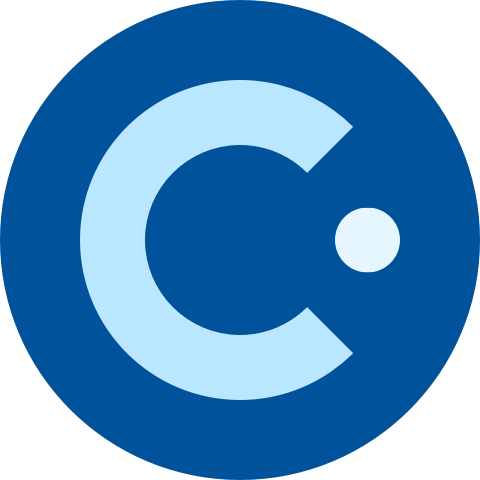Introduction
Gathering competitive intelligence (CI) usually has one foundational goal, and that is to enable an organization to make better business strategies. The importance of competitive intelligence can be determined by the fact that 90% of Fortune 500 companies collect competitive intelligence, and 55% of these companies say that they regularly use competitive information in formulating their business strategies. In fact, according to McKinsey, a company with regular competitive intelligence insights could reverse-engineer the moves of competitors and easily predict what they were likely to do next.
However, not all organizations are familiar with how a competitive intelligence process is supposed to work. Obviously, different organizations can have different approaches or ways of competitive intelligence gathering. The reason for this is that the nature of competitive intelligence varies for different companies, depending on the industry, circumstance, and a host of other factors. Still, it's been observed that professionals that follow a particular set of guidelines or best practices, are more successful in solving their competitive intelligence challenges. You can read more about designing a successful competitive intelligence process here.
The reason organizations with a proper competitive intelligence process succeed in enhancing their organizational performance and growth is simple. Competitive intelligence forms the core of business strategy in these organizations, and when businesses make informed, data-driven strategies, they increase the likelihood of their success manyfold. Secondly, these organizations know the art of competitive intelligence gathering, one which allows them to formulate business strategies with ease. In this article, we'll discuss how to use competitive intelligence to find market opportunities, which competitive intelligence tools you can use to your competitive advantage, as well as some useful metrics you can utilize while strategizing. Let's begin.
How competitive intelligence can help businesses discover market opportunities

Competitive intelligence is often used to discover new market opportunities, as ignoring market dynamics is a guaranteed path to diminishing growth. There is no dearth of market opportunities in the modern business world, all you need to do is conduct competitive intelligence research in the right places and begin thinking analytically about what you uncover. A competitive intelligence tool can help unearth valuable competitive insights about market opportunities. Let's have a look at some places where you should direct your competitive intelligence efforts to discover new market opportunities.
Identifying unmet customer needs
Competitive intelligence tools can help you collect information from review sites and discussion forums, which in turn can tell you a lot about needs that are not being met. Most customers take to review sites to complain about poor service they've received, or a feature that a particular service or product is missing. The same goes for discussion forums. When you identify these unmet needs, you can work towards meeting them through your own product or service. Focus on keeping track of your direct competitors, but don't just look for unmet customer needs in your own market, because you might find something outside your traditional market that your organization may be able to help customers with.
Discovering non-traditional customers or uses
Once again, review sites, discussion forums, news and social media can help you collect information on consumer behavior, which will, in turn, help you find customers for your existing customers, albeit a different segment that you haven't been focusing on. For example, a male fashion brand may begin to offer clothing for women, or a soft-drink brand may begin selling fruit juice for those inclined towards health. Sometimes, customers may even find a new use for a product themselves, e.g. coasters were meant to cover a drink so that any dirt or insect may not fall in, but today, they're almost exclusively used to protect surfaces such as tables from getting wet, or stained.
Finding new markets
Finding new markets to enter is a bit more complex than identifying unmet customer needs or discovering non-traditional customers, as it involves strategic planning across functions, and will likely require designing a new product or service. Competitive intelligence can still be a valuable tool for assessing the potential upside and downside of entering a new market. The intelligence you collect can help you gauge the demand for your product or service and size up potential competitors. More importantly, it can help determine whether anyone (particularly your competitors) has already tried entering this particular market and whether they succeeded or failed, in addition to the reason behind their success or failure.
Tools, methods, and metrics used by organizations to gather competitive intelligence

Gathering competitive intelligence is something that almost every organization does these days, either unknowingly, or in a planned, strategic manner. No prizes for guessing which approach is better. These competitive insights let organizations bolster a robust competitive business strategy. Let us now look at some of the tools, methods and metrics used by successful organizations to gather competitive intelligence.
Tracking competitor's marketing campaigns
Your competitor's marketing campaigns provide you with valuable insights and data that you can use in your own marketing efforts. For example, tracking the duration of your competitors' marketing campaigns can tell you what's working for them, and what's not. If the campaign has been running for a long period of time, it's likely that the campaign is working, and they're getting conversions. Competitor websites and social media are the sources to track to keep an eye on their marketing campaigns.
Tracking where competitors publish their marketing content
It's always a good idea to track the publishers or platforms used by your competitors to publish and distribute their marketing content, particularly if it's working for them. It helps you find new avenues where you yourself can publish your own campaigns. It is also a great predictive metric to understand if there's been any change in their marketing strategy, for example, if they've begun publishing blogs at a new platform or website, when earlier it used to be just on their own website. In addition, it can also help in understanding which white spaces you can create content on, those that your competitors have been ignoring. Here’s a case-study on how a global leader in IT and Consulting leveraged a competitive intelligence tool to drive their marketing decisions, which includes this approach.
Tracking competitor's websites and pages
There are a number of tools these days that let organizations track their competitors' websites and its pages, and can even notify you when there's been a change. Once again, this is a predictive metric that can be used to forecast changes in your competitor’s strategy. It is important to track company websites and pages (particularly landing pages) as this is where most conversions happen.
Utilizing your sales team
Your own sales people talk to your clients, current customers and prospects on a daily basis. Thus, they are the best suited to gathering competitive intelligence directly from your target audience, in the form of primary research. Customers, clients and potential customers/prospects can at times offer free tips and even tactical advice to sales reps which you can use in your future business strategies, and at the very least, offer key insights and understanding into the mind of your target audience. Make it a point to give them some key questions to ask of customers and prospects.
There’s a common problem with this method, however. In the absence of a centralized repository to store such primary intelligence, they often get lost or remain in silos which are hard to find in a timely manner.
Performing a competitive analysis
It is a must for organizations to analyze their competitive landscape in order to gain a comprehensive understanding of their competitors' products, services, value proposition, capabilities, and weaknesses. A competitive analysis is a commonly used, albeit powerful way to do that, and thus formulate competitive strategies. Organizations usually have predefined quantitative and qualitative metrics on the basis of which they benchmark their organization against their competitors. These metrics may be slightly different for each organization, but usually include key areas like:
1. Overall revenue
2. Win rate
3. Product metrics like:
- trials started and/or demos requested
- content views including product page views and video views
- press coverage for the announcement of a new product
- new customer or feature(s) upgrade revenue
- product usage and/or adoption of a new feature
4. Customer happiness/retention
5. Qualitative feedback, both internal and external
Download Competitive Analysis Template
Using competitive intelligence tools
The above-mentioned methods and metrics are quite useful for competitive intelligence gathering, however, they can be time-consuming and resource-intensive. Most organizations use a market intelligence/competitive intelligence tool these days to automate competitive intelligence gathering, and then analyze this intelligence to identify trends, make informed business decisions, and gain a competitive edge. A market and competitive intelligence platform like Contify can help organizations collect information from various public sources on the internet, including their competitors' websites, company websites, news, press releases, job boards, review sites, regulatory portals, etc. Plus, it can be used to add your own sources such as analyst reports and other premium sources of information.
And that's not all, Contify’s dashboard feature can help with graphical visualization of trends and insights, allowing you to perform competitive analyses with ease. It also allows the distribution of competitive intelligence in a number of formats like newsletters, reports, alerts, etc., depending on the preference of different stakeholders and functions of your organization. Another useful feature of a competitive intelligence tool like Contify is that it can act as a centralized repository for all sorts of intelligence. For example, primary insights gathered by your sales team directly from clients and prospects can get lost, as there is no single centralized place for them to store and access it. Using Contify, these primary insights can not only be stored and accessed in a timely manner, but can also be distributed and commented upon, which boosts cross-functional collaboration.
Download M&CI Process Template
Conclusion
For an organization to be able to compete in this highly-dynamic and competitive business environment, data collection, and more importantly the analysis of this data to identify trends, patterns and glean insights is now critical. Times are rapidly changing, and leveraging technologies such as competitive intelligence tools have become necessary in order to regularly stay ahead of your competitors' moves and marketplace shifts. The information present on the internet can provide a wealth of competitive information, which is yours for the taking, but the same is true for your competitors. Wisdom for modern businesses lies in using competitive intelligence as the baseline to inform your decision making, so you don't make the same mistakes over and over. Hopefully, this article provides you with the impetus needed to start your competitive intelligence journey.










